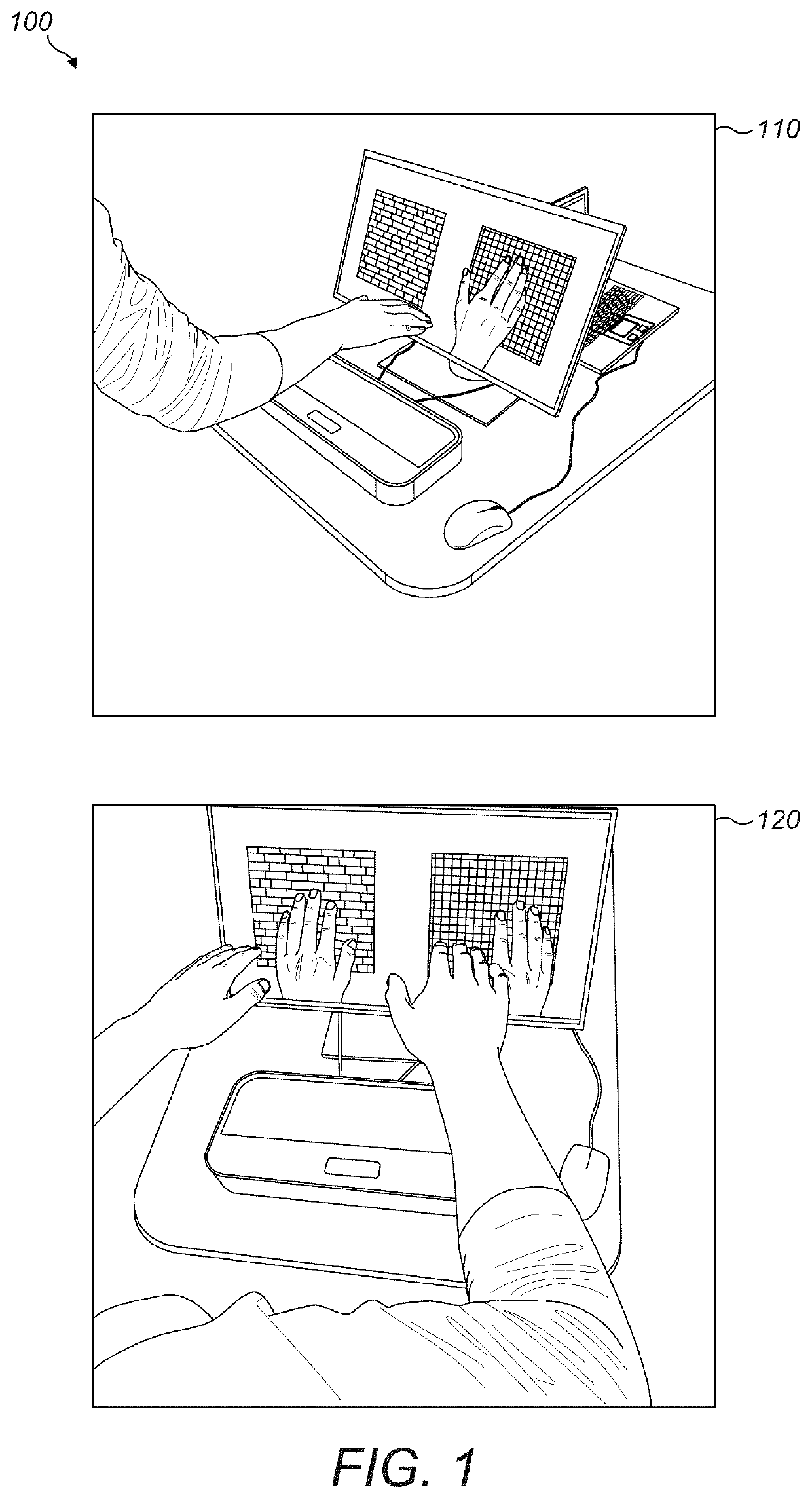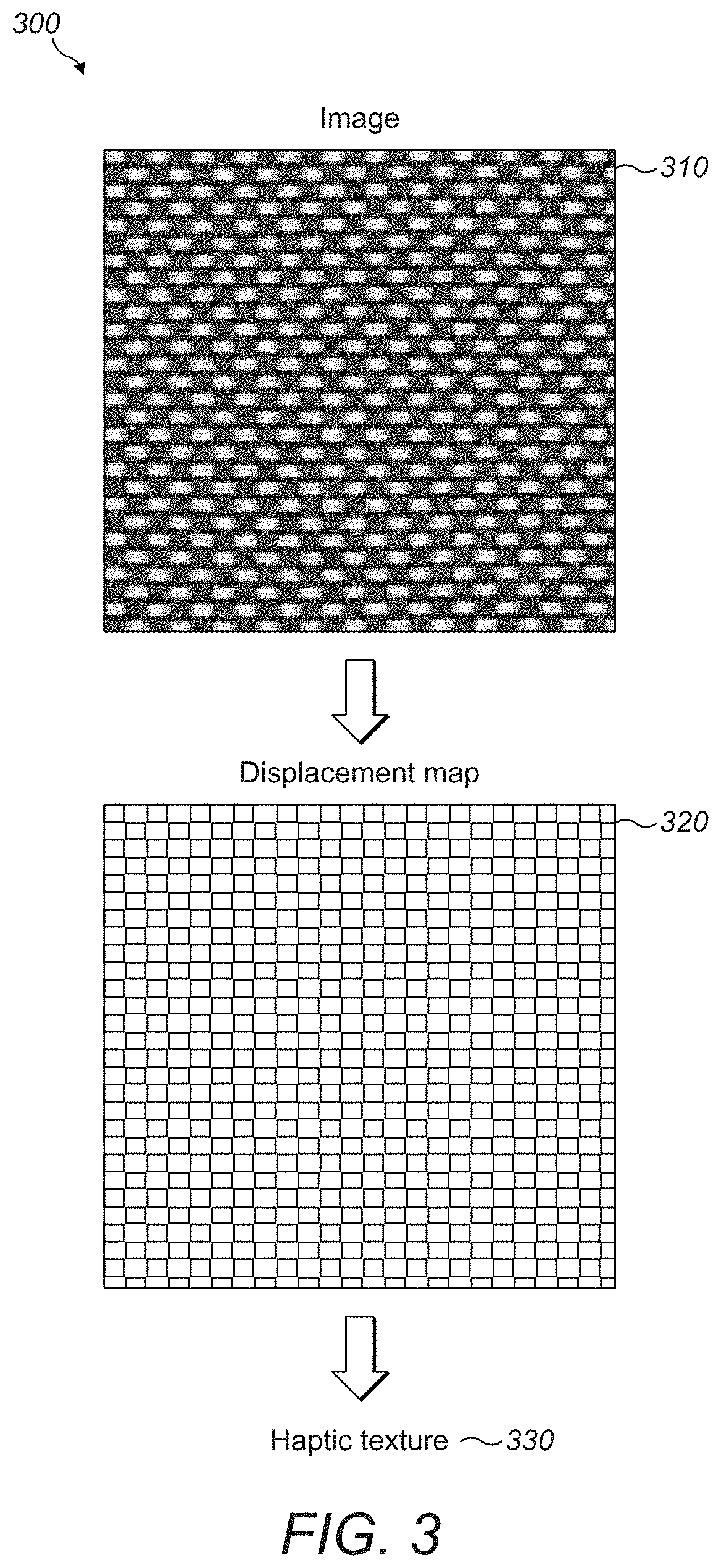Mid-Air Haptic Textures
a technology of haptic textures and haptic systems, applied in the field of improved techniques for midair hapticrelated interactions, can solve the problems of increasing normal force and friction, not yet being the case, and haptic systems have only recently started to be designed, so as to avoid creating discrepancies and hindering the user experien
- Summary
- Abstract
- Description
- Claims
- Application Information
AI Technical Summary
Benefits of technology
Problems solved by technology
Method used
Image
Examples
Embodiment Construction
[0027]I. Mid-Air Haptic Textures from Graphics
[0028]The ability for haptic technology to reproduce texture information has several enabling applications, including the touch of realistic virtual copies of valuable or historical items, robotic teleoperation for medical or industrial purposes, educational and training simulations in AR / VR, and forms a key part of human-fashion interaction (HFI); textural haptic information about products and fashion items can increase online purchase intention. The method of recording the haptic feel of a real object and later reproducing it for others to interact with is called haptography.
[0029]Hand-held Tools. Impedance-type haptic interfaces such as the SensAble Phantom Omni have long been the standard for rendering textures. Notable efforts include the Penn Haptic Texture Toolkit, a publicly available repository of hundreds of haptic texture and friction models, the recorded data from which the models were made, images of the textures, and even i...
PUM
 Login to View More
Login to View More Abstract
Description
Claims
Application Information
 Login to View More
Login to View More - R&D
- Intellectual Property
- Life Sciences
- Materials
- Tech Scout
- Unparalleled Data Quality
- Higher Quality Content
- 60% Fewer Hallucinations
Browse by: Latest US Patents, China's latest patents, Technical Efficacy Thesaurus, Application Domain, Technology Topic, Popular Technical Reports.
© 2025 PatSnap. All rights reserved.Legal|Privacy policy|Modern Slavery Act Transparency Statement|Sitemap|About US| Contact US: help@patsnap.com



